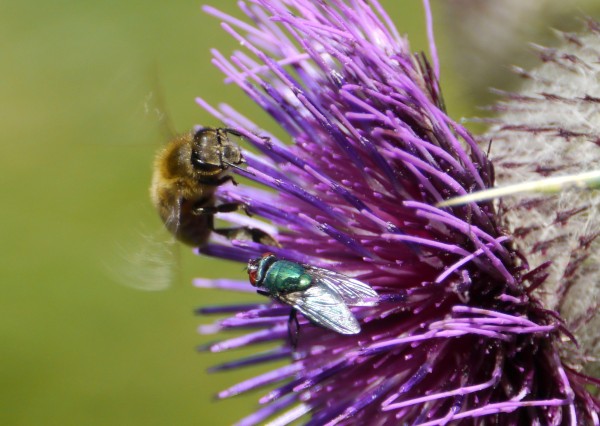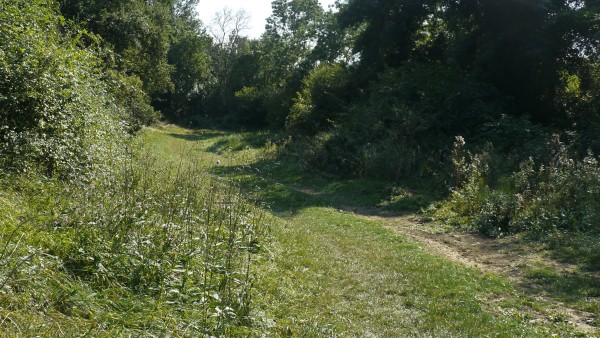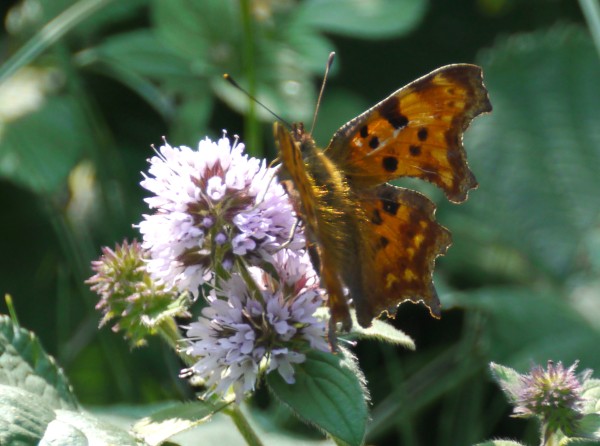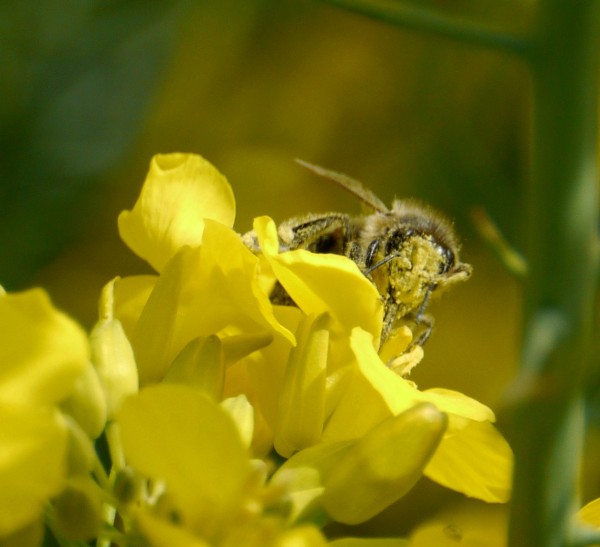Back down to Blog’s Gallop, this time to check out the thistles, on the opposite side of the track to the wild mint. These thistles are of various shapes and sizes – tall and thin, big and fat – I’m going to leave detailed thistle identification for another day – just concentrate on the myriad of bugs feasting upon the nectar.
Interesting Fact : the French for thistle is chardon, and is believed to be the origin for the name of the village in Burgundy – Chardonnay, which in turn gives its name to the grape variety.
Also known as the Hornet Mimic Hoverfly, it has no sting and the larvae live inside wasps’ nests.
When I first downloaded this image, I thought here we go again, trawling through the reference material looking at countless orange/brown butterflies. But no. That tiny little white inverted ‘C’ or ‘comma’ neatly distinguishes it – not to mention the jagged outline and the withered leaf-like underside.
I was thrilled to see this chap below, but I’m not thrilled with the quality of the image, the light was going. Its the first time I’ve seen one of these bumblebees, with his very distinctive orange-red bottom.




























































